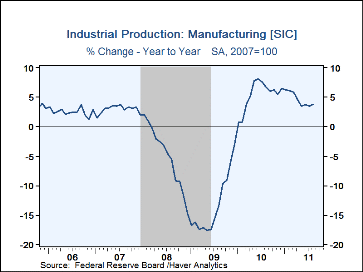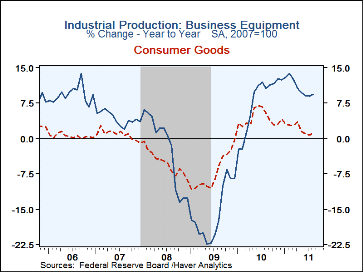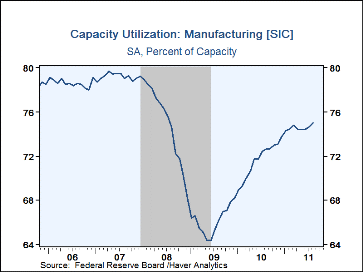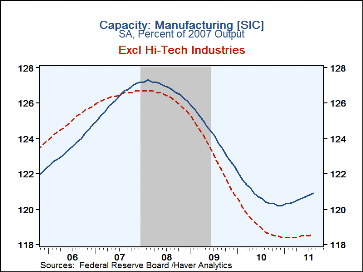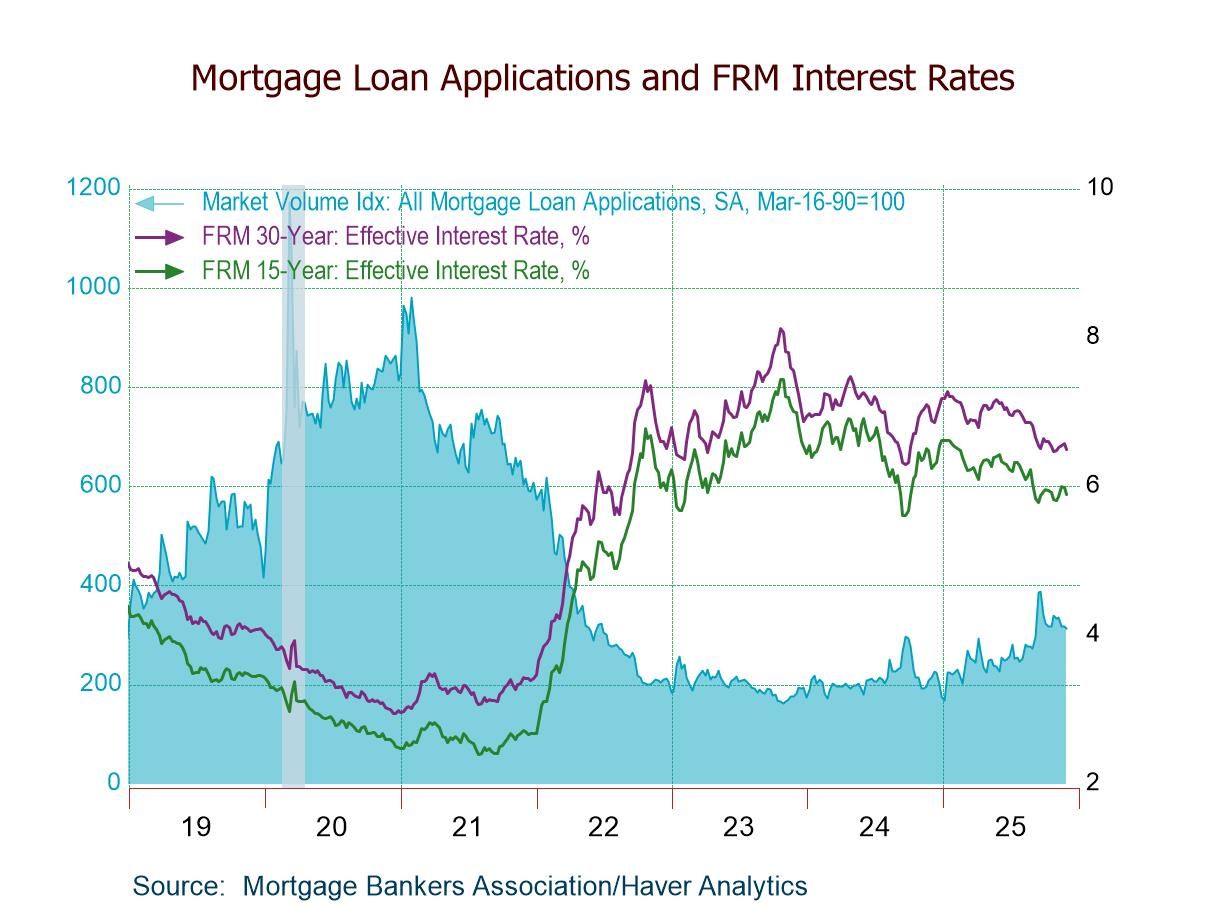 Global| Sep 15 2011
Global| Sep 15 2011U.S. Industrial Production Increase Moderates
by:Tom Moeller
|in:Economy in Brief
Summary
U.S. industrial production inched up 0.1% last month following a 1.0% July gain, originally reported as 0.9%. The latest increase matched Consensus expectations, according to Action Economics. Factory sector output gained 0.4% as [...]
U.S. industrial production inched up 0.1% last month following a 1.0% July gain, originally reported as 0.9%. The latest increase matched Consensus expectations, according to Action Economics. Factory sector output gained 0.4% as motor vehicle output jumped 2.6% (11.7% y/y). Less autos, output rose 0.1% (3.2% y/y). Utility output fell 3.0% and reversed the July increase as hot temperatures subsided. With both autos and utilities excluded, factory output rose 0.2% (3.5% y/y), down from a 0.5% July gain.
Output of computers & electronic components rose 1.3% (6.8% y/y), electrical equipment & appliances rose 0.9% (-1.5% y/y) but machinery output fell 0.4% (+10.8% y/y). In the soft goods area, apparel output slipped 0.3% (+2.2% y/y), down for the third straight month, but chemical output inched up 0.3% (1.7% y/y).
Capacity utilization ticked up to 77.4%. In manufacturing alone, however, utilization rose moderately to 75.0%, up from the recession low of 64.4%. Overall capacity is estimated to have risen 0.9% y/y following a 2.2% decline during 2010. In the factory sector, capacity rose 0.4% y/y. However, it fell 0.1% less the high-tech industries.
Industrial production and capacity data are included in Haver's USECON database, with additional detail in the IP database. The IP database contains figures with more decimal precision and includes extensive lists of "relative importance" numbers for several breakdowns of production by industry and market group. The expectations figure is in the AS1REPNA database.
| Industrial Production (SA, % Change) | Aug | Jul | Jun | Aug Y/Y | 2010 | 2009 | 2008 |
|---|---|---|---|---|---|---|---|
| Total Output | 0.1 | 1.0 | 0.0 | 3.3 | 5.3 | -11.2 | -3.7 |
| Manufacturing | 0.4 | 0.6 | 0.1 | 3.8 | 5.4 | -13.5 | -5.0 |
| Consumer Goods | 0.2 | 0.9 | -0.4 | 1.2 | 4.3 | -7.2 | -5.2 |
| Business Equipment | 0.7 | 1.1 | 0.1 | 9.4 | 7.7 | -16.3 | -2.5 |
| Construction Supplies | -0.3 | 0.9 | 0.1 | 4.2 | 3.8 | -22.5 | -9.7 |
| Materials | 0.1 | 0.9 | 0.5 | 3.9 | 6.3 | -11.6 | -2.7 |
| Utilities | -3.0 | 2.9 | -0.1 | -2.4 | 4.0 | -2.6 | -0.1 |
| Capacity Utilization (%) | 77.4 | 77.3 | 76.7 | 75.5 | 74.5 | 69.1 | 77.8 |
| Manufacturing | 75.0 | 74.7 | 74.4 | 72.6 | 71.7 | 66.2 | 74.9 |
Tom Moeller
AuthorMore in Author Profile »Prior to joining Haver Analytics in 2000, Mr. Moeller worked as the Economist at Chancellor Capital Management from 1985 to 1999. There, he developed comprehensive economic forecasts and interpreted economic data for equity and fixed income portfolio managers. Also at Chancellor, Mr. Moeller worked as an equity analyst and was responsible for researching and rating companies in the economically sensitive automobile and housing industries for investment in Chancellor’s equity portfolio. Prior to joining Chancellor, Mr. Moeller was an Economist at Citibank from 1979 to 1984. He also analyzed pricing behavior in the metals industry for the Council on Wage and Price Stability in Washington, D.C. In 1999, Mr. Moeller received the award for most accurate forecast from the Forecasters' Club of New York. From 1990 to 1992 he was President of the New York Association for Business Economists. Mr. Moeller earned an M.B.A. in Finance from Fordham University, where he graduated in 1987. He holds a Bachelor of Arts in Economics from George Washington University.


